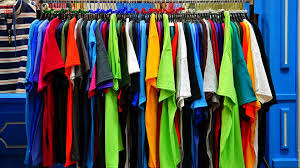 Approximately 95% of Americans wear t-shirts, and consumers don’t think much of buying a t-shirt for $5. But when that shirt only lasts four months and ends up in a garbage bin, the environment suffers. Now, a former journalist and dentist has launched a campaign to promote more sustainable fashion through a practice called upcycling.
Approximately 95% of Americans wear t-shirts, and consumers don’t think much of buying a t-shirt for $5. But when that shirt only lasts four months and ends up in a garbage bin, the environment suffers. Now, a former journalist and dentist has launched a campaign to promote more sustainable fashion through a practice called upcycling.
Christina Dean may have seemed like an unlikely figure to head a sustainable fashion movement, but her Hong Kong-based company, NGO Redress, has taken off. In addition to inspiring people around the globe, Dean’s company is competing for the EcoChic Design Award. This competition is a sustainable fashion design challenge open to designers in the U.S., Europe, and Asia.
This year, the first-place winner will have the opportunity to meet the BYT team in Hong-Kong come September. Michelle Bang, the company’s CEO, will also be there. Bang’s own company rose from the success of Redress as a for-profit expansion of the original business.
The company’s first collection will focus on upcycling fabric scraps from luxury brands like Hugo Boss and Stella McCarthy. The goal behind this project is to help people realize that fashionable, professional attire can be created with these fabrics at an affordable price point for the average consumer.
“We want existing businesses to sit up and watch what we?re doing to make a positive impact, and to hopefully follow suit,” Bang said in an interview with Billionaire.
And the fashion industry isn’t the only sphere where upcycling work is being done. Scientists are also developing upcycling methods to help reduce fabric waste around the world.
“We want to not only recycle garments, but we want to really produce the best possible textiles so that recycled fibers are even better than native fibers,” said Herbert Sixta, Ph.D., who heads the biorefineries research group at Aalto University.
The issue that Sixta and his team ran into was that while ionic liquids can dissolve cellulose in fabrics, the resulting material couldn’t be used to create new textiles. That is, until they discovered another ionic liquid — 1,5-diazabicyclo[4.3.0]non-5-ene acetate — that dissolved cellulose from wood pulp. Unlike previous experiments, the process created a material that could be effectively spun into stronger fibers.
Now, the researchers are working on a way to commercialize their process and create the product on a larger scale. In addition to Dean, Bang, and their respective teams, upcycling clothing is much more real than previously thought.




